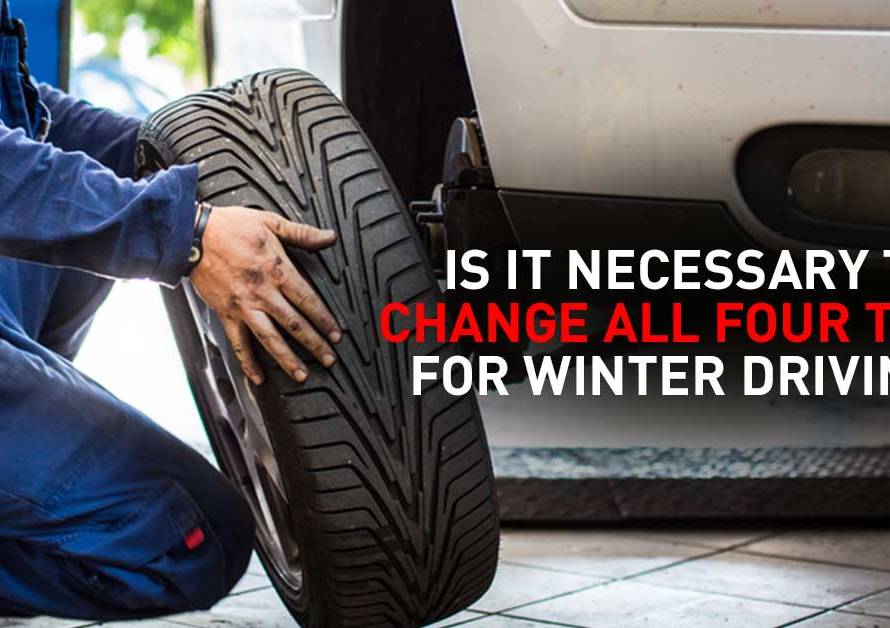As winter approaches, many drivers face the annual dilemma of preparing their vehicles for challenging road conditions. One critical consideration is whether to invest in winter tires and, if so, whether these tires come with rims. Let’s explore the reasons behind their necessity, the potential benefits of purchasing winter tires in Calgary with rims, and the various options available to consumers.
Need for Winter Tires?
The winter season introduces a host of road hazards, including snow, ice, and slush. Standard, all-season tires may struggle to maintain traction in these conditions, compromising vehicle control and safety. Winter tires in Calgary, with their specialized rubber compounds and tread designs, are engineered to enhance grip and performance in cold temperatures, making them a crucial investment for those living in snowy or icy regions.
Winter Tires vs All-Season Tires
It’s essential to distinguish between winter tires and all-season tires. While all-season tires offer versatility across different weather conditions, they may not provide the same level of traction and control as winter tires in extremely cold or snowy conditions. Winter tires are specifically designed to excel in these challenging environments, featuring unique tread patterns and softer rubber compounds that remain pliable in colder temperatures.
Do Winter Tires Come with Rims?
The answer to this question largely depends on the retailer and the specific package you choose. Many tire retailers offer winter tires separately from rims, allowing consumers to use their existing rims or select a set that suits their preferences. However, some packages do come with both tires and rims, providing a convenient and comprehensive solution for those looking to make a seamless transition to winter-ready vehicles.
Benefits of Purchasing Winter Tires with Rims
1. Convenience
Opting for a package that includes both tires and rims eliminates the need for consumers to separately source compatible rims. This can be particularly convenient for individuals who prefer an all-in-one solution.
2. Compatibility
When winter tires come with rims, compatibility is assured. The rims are specifically chosen to match the tires, ensuring proper fitment and optimal performance.
3. Cost Savings
In some cases, purchasing a package with both tires and rims may offer cost savings compared to buying these components separately. Retailers may provide discounts or package deals to incentivize comprehensive winter tire purchases.
Factors to Consider While Purchasing Winter Tires with Rims
1. Compatibility with Your Vehicle
Ensure that the winter tires and rims you choose are compatible with your specific make and model of vehicle. Check the recommended tire size and rim specifications in your vehicle’s owner’s manual.
2. Tire Size and Rim Diameter
Match the winter tire size to your vehicle’s specifications. Consider the rim diameter as well, ensuring it is appropriate for the tire size. Incorrect sizing can affect vehicle handling and performance.
3. Bolt Pattern and Offset
Verify that the bolt pattern of the rims matches your vehicle’s hub. The offset, which determines how the tire sits in the wheel well concerning the suspension, should also be considered for proper fitment.
4. Tread Design and Winter Performance
Different winter tires have varying tread designs optimized for specific winter conditions. Tires with deep treads and siping provide better traction on snow and ice. Consider the expected winter conditions in your area when choosing the appropriate tread design.
5. Rubber Compound
Winter tires use a softer rubber compound that remains flexible in cold temperatures, enhancing grip on icy and snowy surfaces. Check the tire specifications for the type of rubber compound used.
6. Type of Winter Tire
There are different types of winter tires, including studded and studless options. Studded tires have metal studs for additional traction on ice, while studless tires use advanced tread patterns and compounds for grip. Consider local regulations regarding studded tire use.
7. Rim Material and Finish
Rims come in various materials, such as steel and alloy. Steel rims are durable and cost-effective, while alloy rims are lighter and offer better performance but may be more expensive. Consider the aesthetic appeal and performance attributes when choosing the rim material and finish.
8. Cost and Budget
Establish a budget for your winter tire and rim purchase. While it’s tempting to cut costs, investing in high-quality winter tires and rims is a crucial aspect of ensuring safety and performance during winter driving conditions.
9. Package Deals and Discounts
Some retailers offer package deals that include both winter tires and rims at a discounted price. Explore these options to potentially save money while ensuring compatibility between the tires and rims.
10. Consumer Reviews and Ratings
Research and read reviews from other consumers to gain insights into the performance and durability of specific winter tires and rims. Real-world experiences can provide valuable information when making your decision.
11. Installation Services
Check whether the retailer provides installation services or if you need to arrange for professional tire installation separately. Proper installation is crucial for the optimal performance of winter tires.
12. Warranty and Road Hazard Protection
Review the warranty and any road hazard protection offered with the winter tires. Understanding the terms and coverage can provide peace of mind and protect your investment.
Conclusion
The choice between winter tires with or without rims boils down to personal preferences and individual circumstances. Whether opting for a complete package or separate components, the key is to prioritize safety and choose tires and rims that best suit the driving conditions you’re likely to face during the winter months. Always consult with Urban Lube Calgary to ensure you make an informed decision that aligns with your vehicle’s needs and your driving habits.


